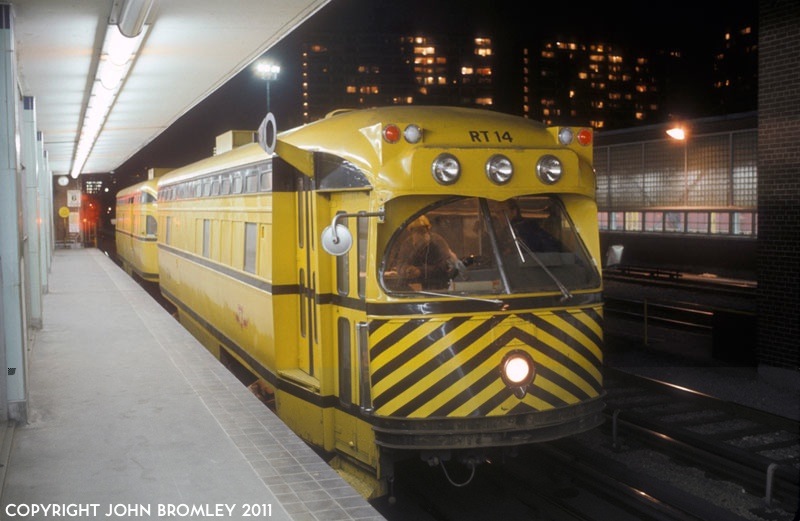[...]
In the 1950s, the CTA was taking delivery of the
6000-series railcars, based on the PCC technology originally developed for a new generation of streetcars. The first 200
6000-series cars were built from scratch using all electric PCC technology. These cars used the B-2 truck supplied by the Clark Equipment Company, chosen because these trucks were already being used on many PCC streetcars used in Chicago (specifically, those built by the Pullman Car Company), so there was ample experience and familiarity with the design. The Clark B-2 trucks for these first 200
6000s were built new and the design was adapted for rapid transit use, which included strengthening the frame and making provision for the gravity third rail shoes. Around the same time, CTA began to replace its streetcars with buses. Not wishing to waste the investment in the relatively new PCC streetcars, the CTA approached the Pullman Co. and St. Louis Car Co. with the idea of recycling the old streetcars into new "L" cars. The original concept of rebuilding the car bodies was found to be impractical and instead new car bodies were built utilizing many of the components and much of the equipment from retired streetcars.. Thus, the remaining
6000-series cars utilized various recycled streetcar components. An integral part of this plan was the reuse of the PCC streetcars' trucks, a very expensive component whose reuse brought a great deal of cost savings to the plan. Chicago's PCC streetcars used both Clark B-2 and St. Louis Car Company B-3 trucks, and while both would eventually be recycled onto "L" cars the decision was made to scrap and recycle the Pullman-built streetcars, with their B-2 trucks, first, since there was already experience using these trucks with the
6000-series cars. In an effort to reduce truck weight and reduce stress on the truck axle assemblies, a new type of third rail shoe and sleet scraper were specified. Instead of a long beam and gravity shoe, the new design featured a short stub beam extending from the truck frame with a spring-loaded "flapper" shoe attached. Redesigned into a package, the sleet scraper was also supported on a stub beam. This design was developed so that the current collection equipment would not parallel the rubber-mounted joint of the truck torque arm and axle assembly. Shortly after entering service, the loading spring on the third rail shoe was found to be undesirable and was removed. The original thin paddle shoe was also soon changed to a thicker casting to increase its life. This design was used on cars 6201-6510. After building these 310
6000-series cars all of the Pullman PCC streetcars had been converted, so the CTA moved on to scrapping and recycling the St. Louis-built PCC streetcars. The St. Louis streetcars had B-3 trucks, which could be modified to accommodate the "L"'s standard suspended-link gravity third rail shoes and sleet scraper arrangement, so the remaining
6000s as well as the
1-50 series cars using recycled streetcar components reverted to this design.
9
[...]







